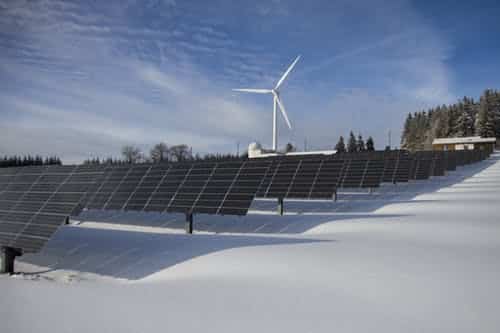Virginia Lawmakers Pass Sweeping Energy Bill to Achieve Carbon-Free Power by Mid-Century

Virginia lawmakers passed the Clean Economy Act on Feb. 11 that sets the state on the path to carbon-free power by 2050, establishes a mandatory renewable portfolio standard, adopts an energy storage deployment target, and strengthens energy efficiency requirements.
Among the major provisions, the legislation replaces the existing voluntary renewable energy portfolio system program with a mandatory RPS, setting annually increasing targets for electric utilities and licensed competitive suppliers to source their power from renewable resources to achieve 100 percent renewable energy by mid-century. The state currently has a voluntary program with a goal of 15 percent by 2025.
The legislation directs the State Corporation Commission to adopt regulations for the implementation of an energy storage deployment goal of 2,400 megawatts by 2035 with interim targets. The bill establishes an energy efficiency standard, requiring each investor-owned incumbent electric utility to achieve incremental annual energy efficiency savings that start in 2021 at 0.35 percent, increasing annually until 2027 to achieve at least two percent of its average annual retail sales in the three preceding calendar years.
The bill also calls for regulations establishing a carbon dioxide cap-and-trade program to limit and reduce the emissions released by electric generation facilities, consistent with the model rule of the Regional Greenhouse Gas Initiative, the nine-state compact that established the nation’s first mandatory emissions-trading program to limit power sector emissions.
The state lawmakers are also considering legislation introduced on Jan. 17 that would enable customers to purchase electricity from the retail provider of their choice, ending monopoly control over the state’s energy system.
The Grid Transformation and Security Act that took effect in July 2018 paved the way for widespread adoption of renewables by declaring that 5,000 megawatts of solar and wind energy are in the public interest.
Natural gas accounted for about 53 percent of Virginia’s electricity net generation in 2018, while nuclear power provided 31 percent, according to the U.S. Energy Information Administration. Coal and renewables represented 10 percent and 7 percent, respectively.
EnerKnol Pulses like this one are powered by the EnerKnol Platform—the first comprehensive database for real-time energy policy tracking. Sign up for a free trial below for access to key regulatory data and deep industry insights across the energy spectrum.
ACCESS FREE TRIAL


